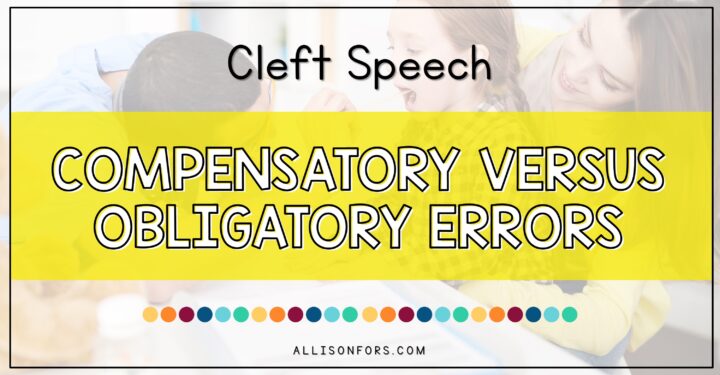
How and Why to Teach Negation
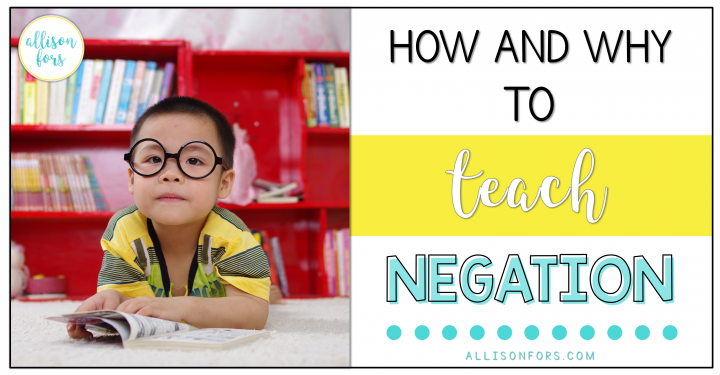
Teaching negation in speech therapy! Negatives are a difficult concept to teach and learn but are critical to a child’s ability to communicate.
Comprehending and using negation is a common grammar challenge in language acquisition. Although children use negatives in their first years (such as using the word “no”), other negations can be quite complicated for children to produce and comprehend. Understanding those negatives is critical to a child’s success at school, home, and in the community. Negation is absolutely necessary for being able to communicate and reason effectively.
Negation is especially difficult to learn and teach for a few reasons. First, negatives cannot be taught as nouns and adjectives because they hold a number of different meanings and uses. Second, it can be hard for teachers or parents to pinpoint which aspect of negation the child is having trouble with. Third, negation completely reverses the meaning of the sentence, which can be a hard concept to grasp!
Break it down by understanding the functions of negation and the types of negatives. You can then use the strategies and books below to teach it.
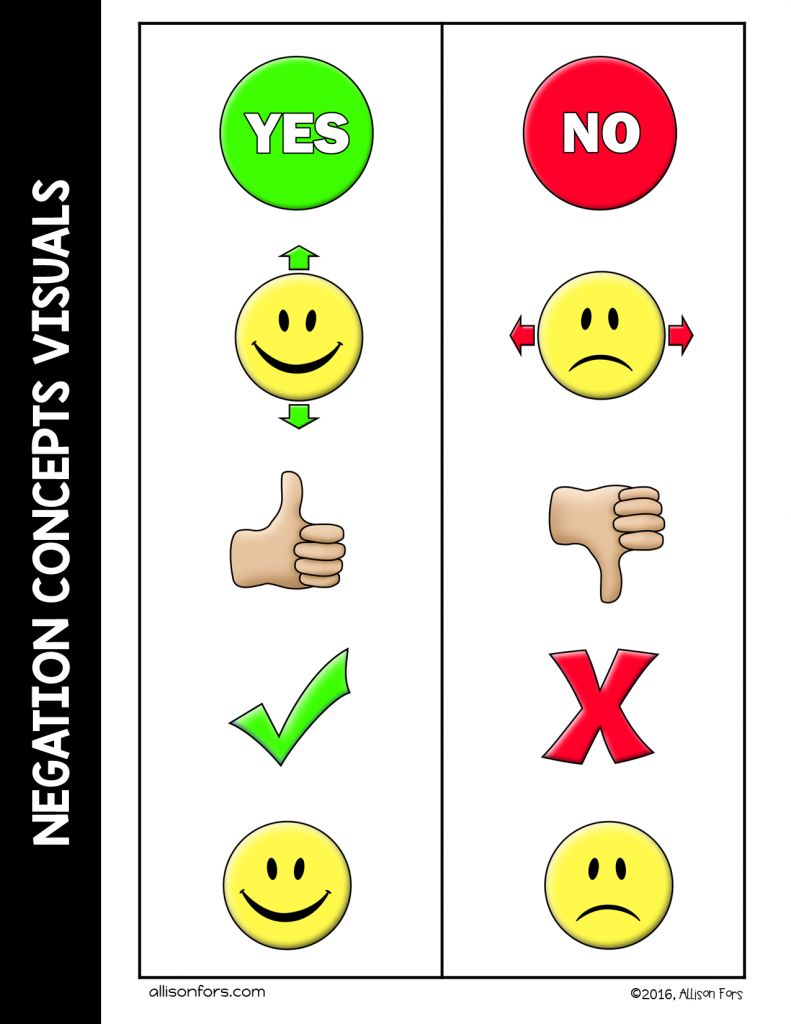
DEVELOPMENT AND TYPES OF NEGATIVES
THE DEVELOPMENT OF NEGATIONS:
12-22 months: single word – no, gone; negative + x
22-26 months: no and not used interchangeably
28-30 months: no, not, don’t, can’t used interchangeably; uses a negative next to a verb
31-32 months: negative element placed between the subject and predicate
33-34 months: won’t appears and is used interchangeably with no, not, can’t, don’t
35-37 months: negative appears with auxiliary verbs; subject + auxiliary+ negative + verb
38-40 months: adds isn’t, aren’t, doesn’t, and didn’t
41-46 months: adds wasn’t, wouldn’t, couldn’t, shouldn’t; negative appears with copula in subject + copula + negative
47+ months: adds indefinite forms nobody, no one, none, and nothing; has difficulty with double negatives; uses copula + negative
Brown, R. (1973). A first language: The early stages. London: George Allen & Unwin.
THE DEVELOPMENT OF FUNCTIONS OF NEGATION:
- Rejection – “Do you want a cookie?” “No”; “I don’t want it”
- Non-existence – “Mommy isn’t there”; “It’s gone”
- Prohibition – “Don’t touch, that’s mommy’s”
- Denial – “Is this your book?” “No”; “I did not take it”
J Child Lang. 1991 Feb;18(1):51-66
THE TYPES OF NEGATIVES:
Present Tense – don’t/do not, doesn’t/does not, can’t/can not, isn’t/is not, wouldn’t/would not
Past Tense and Future Tense – won’t/will not, wasn’t/was not, weren’t/were not, didn’t/did not
Questions – Aren’t you coming? Isn’t he tired?
Negative Modal Verbs – couldn’t be, wouldn’t have been, shouldn’t have
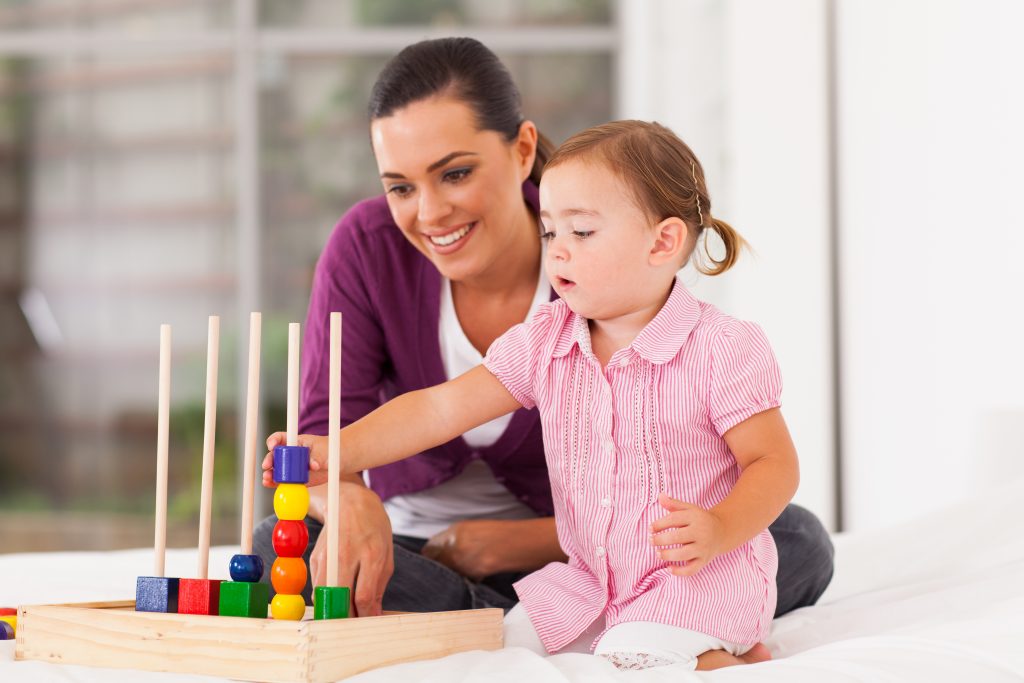
IDEAS TO WORK ON NEGATION
Visuals – First, the child needs to understand the meaning of the word “no.” To do this I use some kind of visual! For example, shaking your head while saying “no” or “not.”
Tangible Objects – Use two familiar and tangible items (favorite toys/ food) and ask “Which one is NOT a ball?” Put emphasis on the word “not” and you can continue to use your visual (head shake). As they being to grasp the concept, fade these models out. Then add more items to the field (3+) and change up the question to include the positive questions as well (“Which one is the ball?”). The next level would be to incorporate adjectives by asking: “Which one is NOT red?”
Pictures – Follow the same guidelines but with pictures. Real pictures are best! You can begin to ask different types of questions to generalize the negation concept. For example, ask about object function: “Which one is not for cooking?” Begin to incorporate other types of negatives, such as: “Which animal can’t fly?” You can also use picture scenes as a higher-level activity. I have a Pinterest board full of scenes for many uses. Feel free to pull it up and use it in your sessions!
Following Directions – The next step of comprehension is being able to follow verbal directions. Make it a fun, silly game of having to listen extra hard to the directions. For example, “Touch the chair but don’t look at it!” or give conditional directions such as, “If you are not a boy, touch your nose.” Once your student gets the concept, they can be the ones in charge of giving the directions! This requires a whole new level of thinking and verbal planning.
Barrier Games – Barrier games are a great way to incorporate listening to verbal directions in a more structured activity. If you’re not sure what barrier games are, head here! In short, they are a language game in which two players sit across from each other with a barrier between them. Each player is given the same scene and pieces. A barrier is placed between the players to hide one’s scene from the other player. Directions are given on where to place the pieces and at the end, you compare your scenes, which should be the same.
You can easily give the students directions on where to place their pieces while incorporating negatives. For example, “Put the kite in the sky but not touching the cloud,” or “Put on all the kids but not the baby.”
Repetition – When it comes to teaching the more complex negations and asking questions with negations, it’s all about finding a motivating, functional game and modeling the phrase/question with the negative. For example, playing “Go Fish” and reinforcing the sentence “I don’t have it.” I also find using puppets helpful and doing silly things with them. For example, covering the puppet’s eyes and saying “I can’t see! I can’t see!” Smaller children tend to find this funny and then want a turn.
Repetitive books with negation come in handy! I have a post with books that you can use while teaching and generalizing negation: 30 BOOKS TO HELP TEACH NEGATION
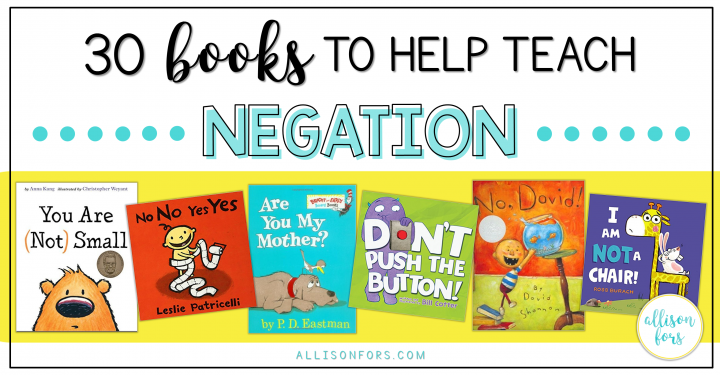
SPECIFIC RESOURCES
“What Doesn’t Belong?” – A free resource that you can use to work on negation, as well as categories and associations.
Negation – A resource to teach the beginning stages of negation comprehension.
Boom Cards Negation – A no print option.
Thanks for reading!
How do you like to work on negation?
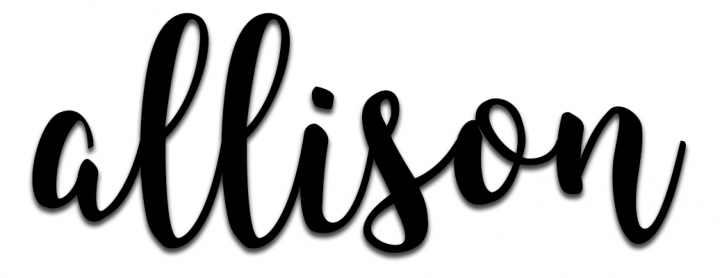
If you enjoyed this post, please share it!
Follow my blog with Bloglovin
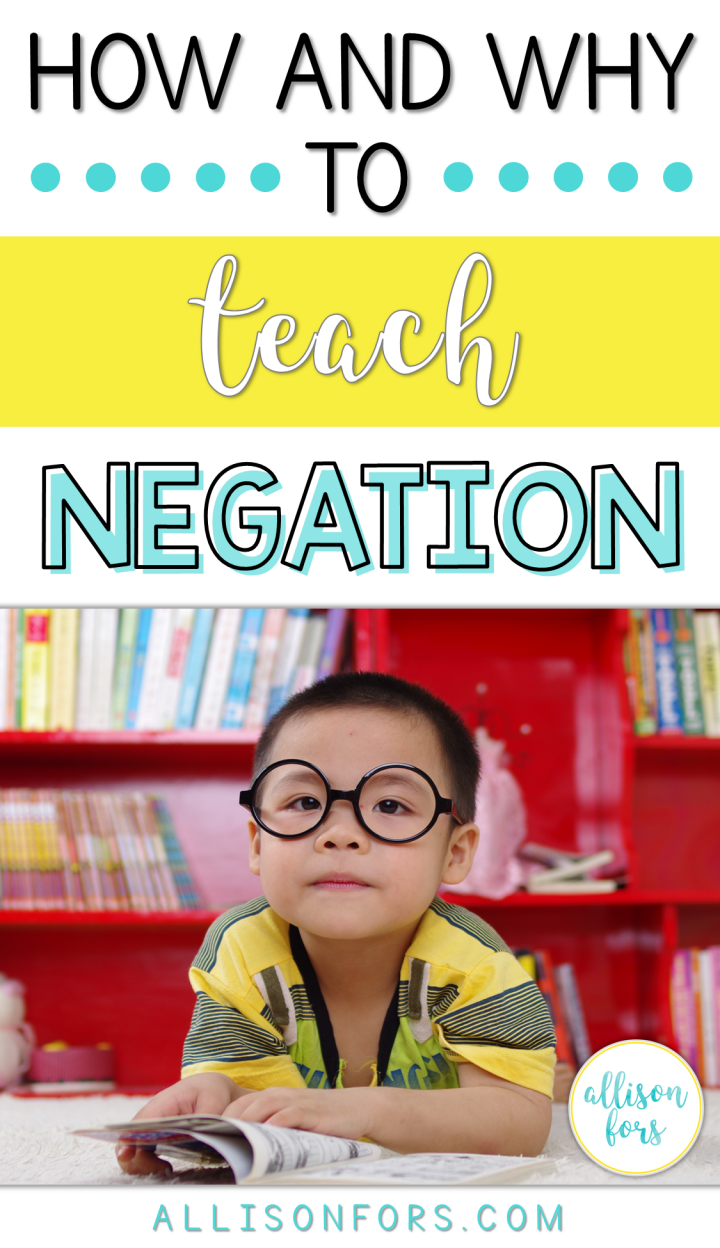
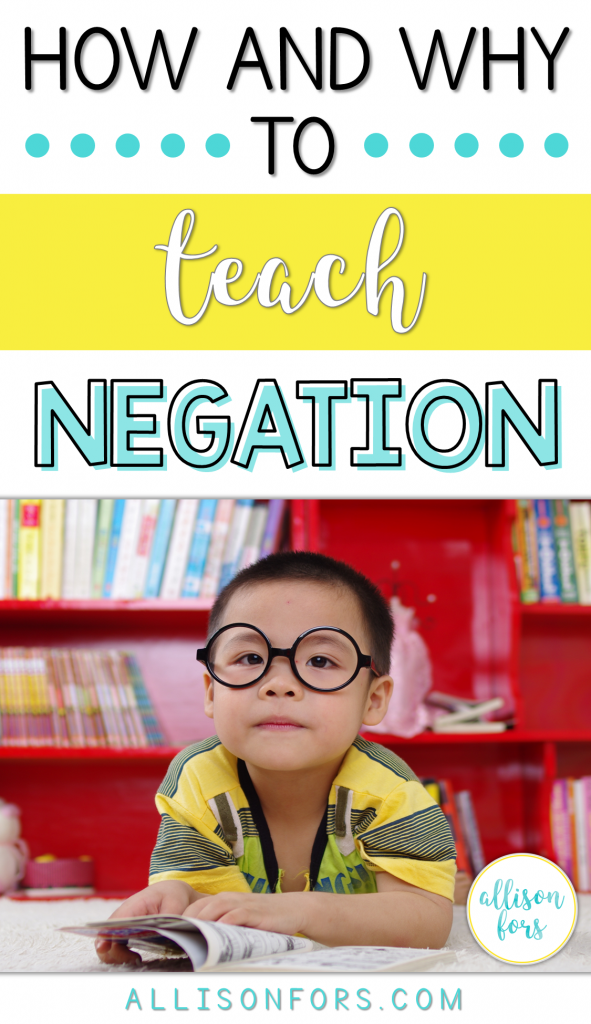

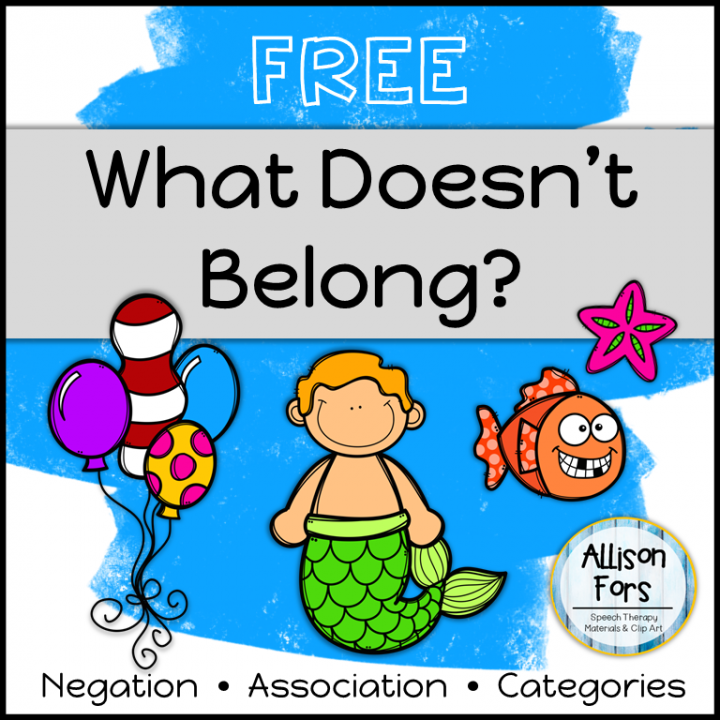
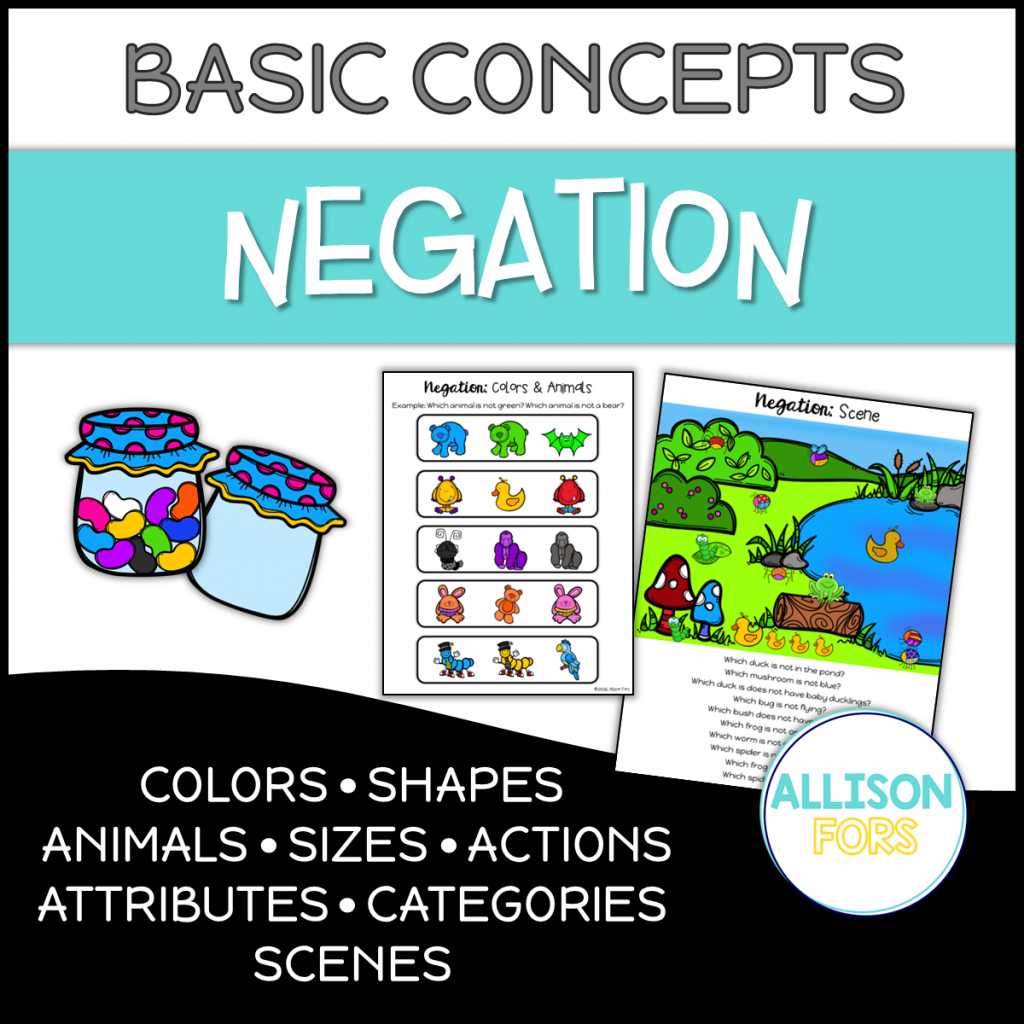
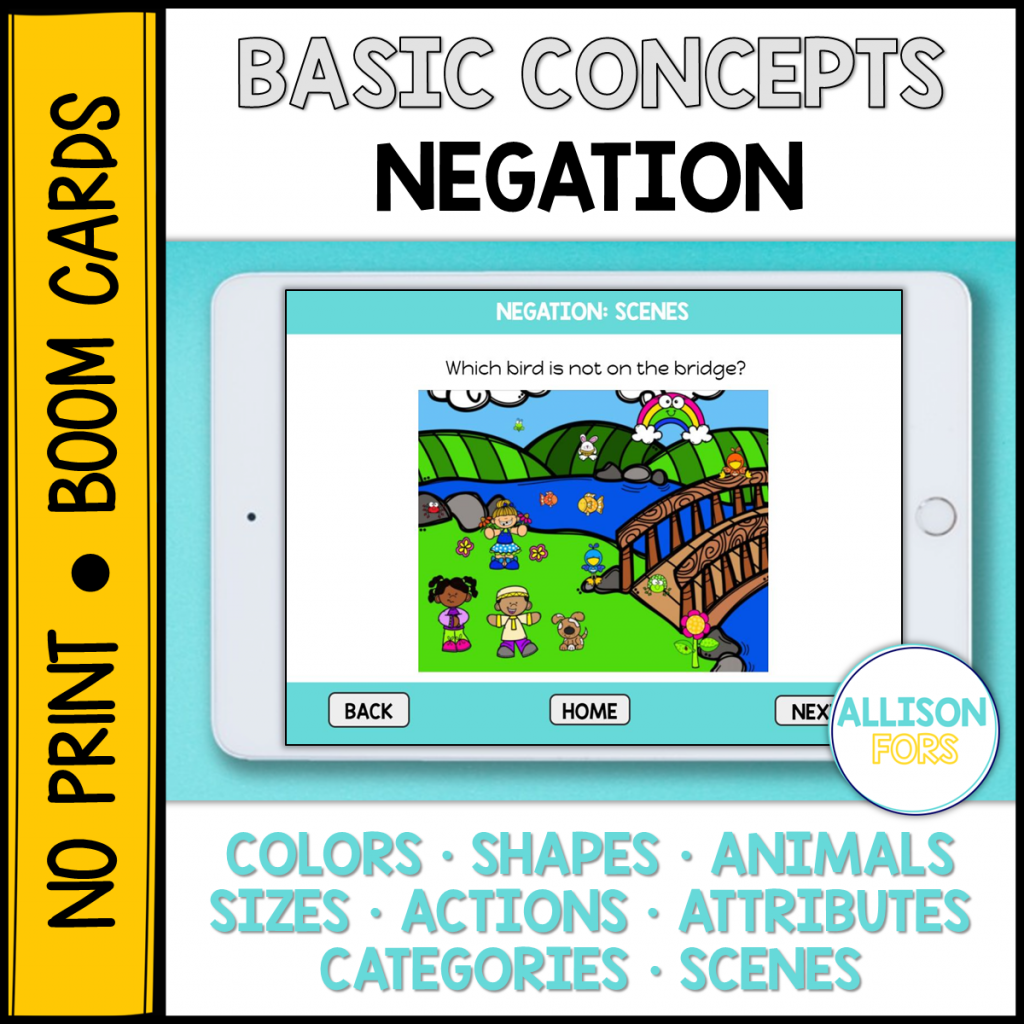
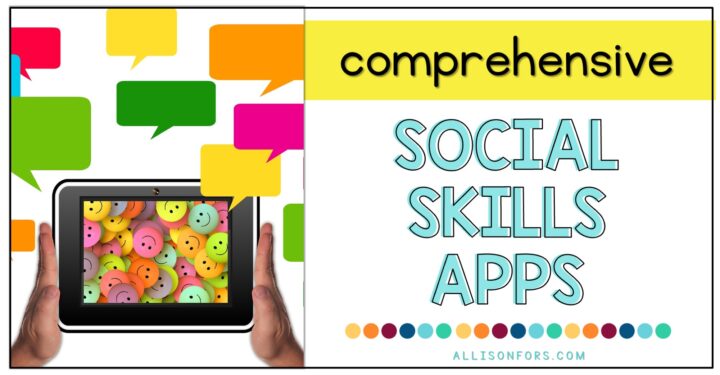
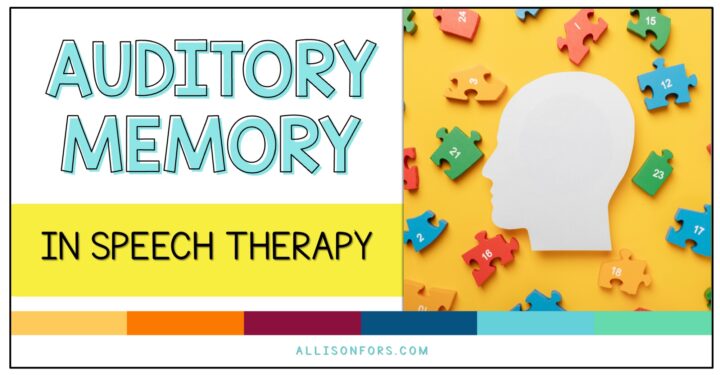
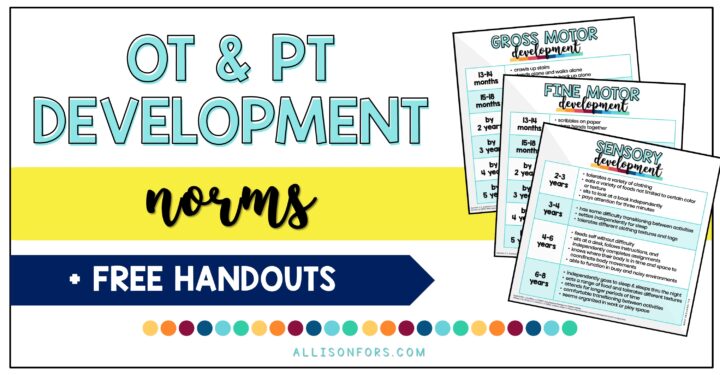

One Response
Ths is great, but do you have age of acquisition for each type of negation?